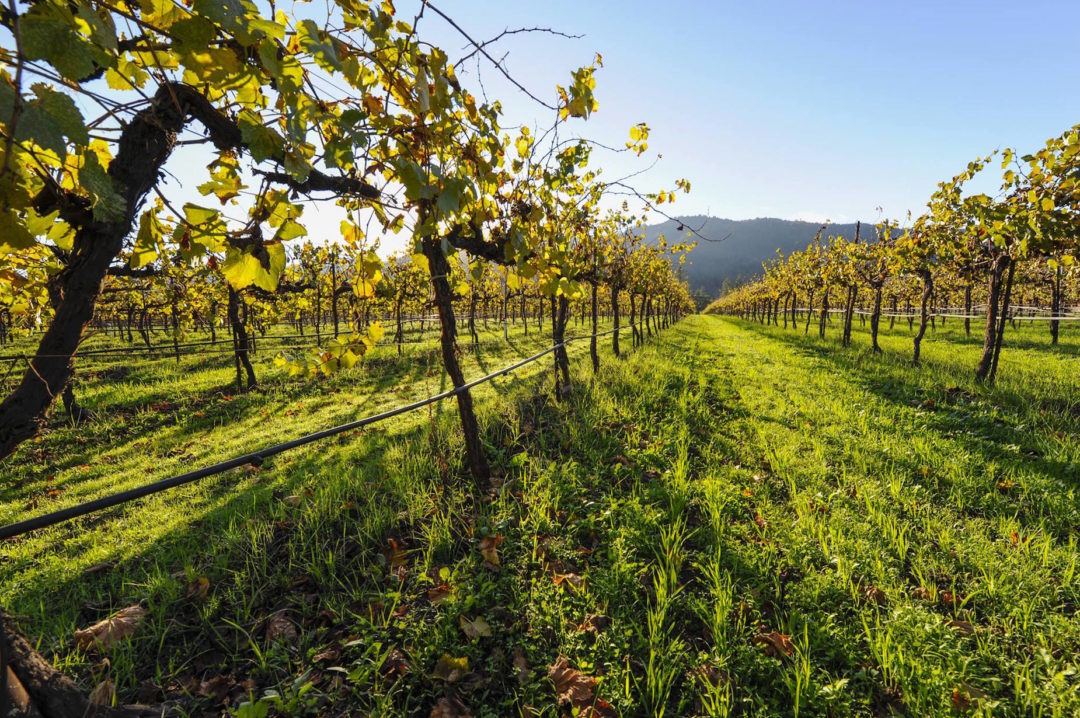
Frey Vineyards Hurt as California Burns

**DUE TO THE FIRE EMERGENCY, WE ARE SUSPENDING ORDERS FOR NOW** read the homepage of Frey Vineyards Winery, the third-generation family-owned and operated Mendocino County winery.
An industry pioneer and long-time friend of WholeFoods Magazine, Frey Vineyards opened in 1980 producing sulfite-free organic wine and in 1996 became America’s first organic biodynamic winery.
“Our winery has burned down and most of the family homes, though our warehouse is intact,” Nathan Frey toldWine Spectator. “The homes of many friends and neighbors also burned, and our heart goes out to all of them.”
John Capone, a freelance writer working this harvest season in the cellar of a Napa Valley winery, described what was happening there.
“Smoke damage in grapes is the issue. Almost anything hanging is not worth bringing in because the smoke permeated the skins of the grapes and the resulting winemight have smoky aromas and unpleasant flavors,” Capone said.
“Less certain is the effect on wines and juice in the tank,” he added. “Our tanks are outside, so it’s a concern. A lot of wineries are set up like that, but certainly not all of them.
“The other thing, and it makes sense when you think about it, but it didn’t hit me until they got crossed off the board of incoming fruit – there are some vineyards we were expecting fruit from that are just gone. That will have long-term economic impact, obviously.”
California, where all outdoor marijuana growth is legal, is also the nation’s leading producer of cannabis. The so-called Emerald Triangle parallels the wine growers as many have made a shift into that business. The California Growers Association reported one third of regional cannabis producers were under evacuation orders or helping others escape.
The Wrath of Irma
In Florida, meanwhile, Hurricane Irma left parts of the state in devastation with crop farmers just beginning to assess the damage. Aggregate total losses are around $2 billion, according to Marty Mesh, executive director of the Florida Certified Organic Growers and Consumers.
In southern Florida, many farmers were ready to harvest their avocados when Irma hit. This was also to be the first promising year for citrus crops, after years of disease. One farmer lost upwards of 75% of his citrus fruits, according to Mesh.
Uprooted citrus trees and fruits were flowing through the streets during the flood. The remaining trees are likely to develop disease because they were wet for too long.
Strawberry and tomato season in the north was impacted as well because much of the land ready for planting was flooded and anything planted was lost. Gainesville, a northern Florida city, reportedly lost 35% of its early fall plantings. Mesh says it will be difficult for growers to replant, because many greenhouses were also destroyed.
Labor shortages may cause bigger problems. For instance, in Immokalle, FL, home to many tomato farmers, worker housing was destroyed. Without homes to live in, laborers will look in other states for work and may not return to Florida when it’s time to replant, Mesh says.
“Basic food for lots of folks” will cost more, Mesh says. This includes oranges and other citrus, avocados, strawberries and tomatoes. Stores will look to California to replenish their produce section and some may even look internationally, which will result in higher prices.
Restart in Puerto Rico?
When Hurricane Maria hit Puerto Rico, in addition to mass destruction and flooding of homes, a growing tightly-knit network of organic and sustainable growers was also washed out.
The island is also home to more than 350 natural foods stores.
"Not one retailer, that I am aware of, has completely abandoned their store(s) or home(s) in Puerto Rico," said Nancy Schmedes, Caribbean sales manager for Maximum Marketing, a natural and specialty outsourced sales force firm based out of Pompano Beach, FL. Schmedes pushed back a scheduled visit to the island but is in communication with customers. While sales will be hurt until roads are cleared for deliveries and water and power restored, she is optimistic.
"Things are improving but the process is slow," Schmedes toldWholeFoods. "Most of the island is still without electricity and clean water. They will rebuild and come back strong!"
Puerto Rico imported 85% of its food – some of it from local islands that were also devastated by Maria. But employment in agriculture, farm income and land cultivation was up by 50% propelled in part by a burgeoning farm-to-table movement. The hurricane wiped out 80% of crop value in hours.
Food pioneers such as Tara Rodresoga Besoza, co-owner of El Departmento de la Comida, a community-focused restaurant serving vegetarian and vegan dishes, is focusing on the chance to rebuild. Americas for Conservation + Arts, an organization that leverages Latino American leadership for environmental conservation, has called on Rodresoga Besoza to reshape Puerto Rico’s agricultural future.
“This has been an experience for us under such horrible conditions, but also it’s a moment for people who have been working on real solutions. Now is our moment to shine,” she told an interviewer.

The editorial team at WholeFoods Magazine has decades of experiences reporting on natural products industry news, trends, and more. This national, monthly business-to-business magazine has been published continuously for nearly 40 years (the magazine was founded in 1977, and has been owned by Wainer Finest Communications since 1984). It is the longest-tenured media outlet of its kind in the natural products industry. The editorial focus at WholeFoods Magazine is, and always has been, on informing and educating members of the natural products industry.
The Magazine
Information
About Us
NOTE: WholeFoods Magazine is a business-to-business publication. Information on this site should not be considered medical advice or a way to diagnose or treat any disease or illness. Always seek the advice of a medical professional before making lifestyle changes, including taking a dietary supplement. The opinions expressed by contributors and experts quoted in articles are not necessarily those of the publisher or editors of WholeFoods.







